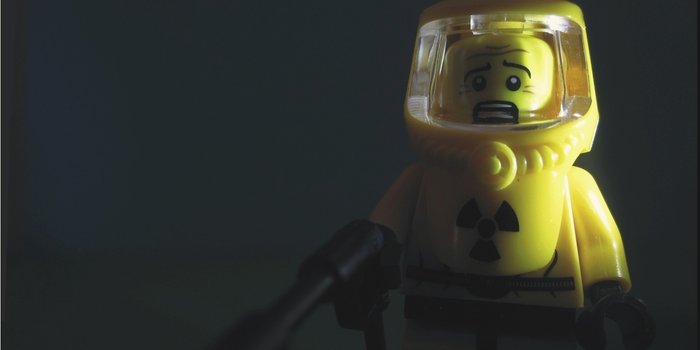Provisional Patents: What are they and why do you need them?

 By Gene Quinn
By Gene Quinn
The first thing that needs to be said, and completely understood, is that there is no such thing as a provisional patent. Patent attorneys and seasoned professionals do refer to “provisional patents” frequently, but that is just a shorthand reference for what is known as a provisional patent application.
The United States Patent and Trademark Office will never issue a provisional patent. A provisional patent application simply will not mature into an issued patent. In the right circumstance (and done properly) a provisional patent application can be a very useful tool for inventors. This is particularly true now that the United States is a first to file country, which inventors absolutely must interpret as meaning file first before disclosing anything about an invention, offering it for sale or using the invention publicly.
Why do Provisionals Exist?
Since June 8, 1995, the United States Patent and Trademark Office has offered the option to file a provisional application for patent. Provisional patent applications came into existence when the patent term changed from 17 years from issuance of the patent to 20 years from the earliest filing date of the nonprovisional patent application, which is what must be filed if a utility patent is to issue.
Changing patent term from 17 years from issue to 20 years from filing would have lead to a peculiar unfairness for U.S. inventors without a “provisional fix.” When invention occurs in the United States a foreign filing license must be obtained prior to filing a patent application overseas. A foreign filing license is most easily obtained by filing a patent application in the U.S. But if you file a nonprovisional utility patent application the patent term clock starts to run. Inventors outside the United States would be able to file a patent application in the country where they lived, which would establish priority of invention with a filing date, but not start the U.S. patent term clock running. This is true because patent term in the U.S. begins with the filing of a U.S. nonprovisional patent application, not the filing of a foreign patent application.
To address this issue, which would have given foreign citizens better rights than U.S. citizens insofar as establishing priority filing, Congress simultaneously created a provisional patent application, which can be filed by anyone, establishes a priority filing date, but which like a foreign application does not start the U.S. patent term clock. Thus, with a provisional patent application, inventors receive the benefit of a priority filing date without the patent term starting.
The Benefit of a Provisional Patent Application
One reason starting with a provisional patent application makes a lot of sense for most inventors is because it offers a cheaper way to initiate the patent process. Provisional patent applications are cheaper to prepare (because there are no formal requirements in the filing) and the filing fee due to the United States Patent Office at the time of filing is only $130 for small entities (i.e., which is about $600 less than the filing fee for a nonprovisional patent application), Indeed, the filing fee is even less — just $65 — if you qualify as a micro entity. See USPTO Implements Micro Entity Discount.
Regardless of the filing fee to be paid to the USPTO, provisional patent applications cost less to prepare from an attorney fee perspective because there are no formal requirements, which means a patent attorney or patent agent can focus on disclosing the invention in its full detail while still preparing an exceptionally detailed application that costs a fraction of the cost of a nonprovisional patent application (i.e., regular patent application).
Many patent attorneys and patent agents will question whether you can really prepare a provisional patent application while spending less time than preparing a nonprovisional patent application. It is not only possible, patent attorneys and patent agents do it all the time. There is no need to draft claims in a provisional patent application, which alone will save hours of attorney or agent time.
This is not to say that provisional patent applications should be filed on the cheap without real effort. A provisional patent application must describe the invention with as much detail and specificity as a nonprovisional patent application. Thus, there is no benefit to skimp on the invention disclosure. Of course, most inventors will have something that can be described adequately, filed and protected with a priority filing date prior to completing the invention. Describe whatever you can, file a provisional patent application and work toward perfecting the invention and seeing if there is a market. That is how provisional patent applications are best and why they are a valuable tool for those with a limited budget.
Assuming you have filed an appropriate provisional patent application you can market the invention without fear of losing patent rights, generating cash to proceed with development or further patent activities. In other words, the provisional patent application is an interim step along the road to a patent. If it looks like the invention will be a success and there is market interest you will eventually file a nonprovisional patent application to actually obtain a patent. If there is no real interest in the invention then move on to whatever is next having spent only a fraction of the money you would have spent to file a nonprovisional patent application.
Always remember, inventors are creative people. This means there will always be a next invention. Preserving capital to pursue the next invention, which may be the one that succeeds, is as important as anything else an inventor can do.
This article is courtesy of IPWatchdog.com. It is based on a piece published on May 13, 2017 under the title “The Benefits of a Provisional Patent Application”. Link to original publication: http://www.ipwatchdog.com/2017/05/13/benefits-provisional-patent-application/id=83161.
Gene Quinn is a patent attorney and a leading commentator on patent law and innovation policy. Mr. Quinn is the Founder and Editor of IPWatchdog.com, which he started in 1999. IPWatchdog.com has been recognized multiple times by the American Bar Association as a top 100 legal blog, multiple times as the top IP blog, and in 2014 was inducted into the ABA Blawg Hall of Fame.
In 2017, Mr. Quinn was recognized by IAM Magazine as one of the top IP strategists in the world.



